#OnlineHarassment
Text
Social Media ChatGPT Prompts Digital - Ebooks
A Spark of Inspiration: Social Media ChatGPT Prompts
I recently used the ebook "Social Media ChatGPT Prompts" and found it to be a treasure trove of creative ideas. Whether you're struggling with writer's block for your next Instagram caption or brainstorming content for a new YouTube video, this ebook offers a variety of prompts specifically tailored to different social media platforms.
Fueling Engagement
The prompts are well-organized and easy to follow, sparking fresh ideas that will resonate with your audience. They go beyond basic questions, often incorporating storytelling elements or current trends to help you craft truly engaging content.
A Time-Saving Tool
By providing a starting point, the ebook saves valuable time and mental energy. It's a fantastic resource for anyone looking to boost their social media presence and take their content creation to the next level. Click here
#SocialMediaImpact#SocialMediaEffects#SocialMediaInfluence#SocialMediaBehavior#DigitalSocialInteractions#FakeNews#Misinformation#InformationTrust#MediaLiteracy#FactChecking#MentalHealthOnline#SocialMediaAddiction#DigitalWellbeing#OnlineTherapy#PsychologicalImpactOfSocialMedia#Cyberbullying#OnlineHarassment#DigitalSafety#InternetEthics#OnlineAbusePrevention#OnlineCommunities#VirtualCommunity#CommunityBuilding#CommunityEngagement#InternetSubcultures#SocialMediaMarketing#DigitalMarketing#InfluencerMarketing#ContentStrategy#BrandEngagement
1 note
·
View note
Link
The highly anticipated West End revival of "Romeo & Juliet," starring Tom Holland, has been overshadowed by a disturbing incident of online racial abuse directed towards a cast member. Director Jamie Lloyd has issued a strong statement condemning this behavior and pledging to protect his artists. A Dream Cast Targeted: Racial Abuse Casts a Shadow News of the "Romeo & Juliet" revival, featuring Tom Holland reprising his stage roots, generated excitement among theatre enthusiasts. The production, slated to open at London's Duke of York's Theatre in May 2024, features a diverse cast, including Francesca Amewudah-Rivers as Juliet. Unfortunately, the casting announcement was followed by a wave of online harassment, specifically targeting a Black cast member. Romeo & Juliet Revival Tainted by Racial Abuse Director Jamie Lloyd Takes a Stand: Zero Tolerance for Abuse Director Jamie Lloyd, known for his acclaimed productions, refused to let the online vitriol go unchecked. On behalf of his entire company, he released a powerful statement via the Duke of York's Theatre social media channels. The statement condemned the "deplorable racial abuse" directed towards a cast member, declaring: Lloyd's statement went beyond mere condemnation. He emphasized the company's commitment to protecting its artists. He affirmed their unwavering support for the entire cast and crew, stating that "any abuse will not be tolerated and will be reported." This strong stance sends a clear message: online harassment has no place in the theatre industry or society as a whole. A Culture of Respect and Inclusivity: Moving Forward With Purpose The online harassment incident highlights the ongoing struggle for inclusivity within the arts. Casting choices that challenge traditional expectations sometimes provoke negative reactions from certain audiences. However, Lloyd's response demonstrates a commitment to fostering a more diverse and welcoming environment. The statement also emphasizes the importance of artistic freedom. Theatrical productions offer a platform for artists to explore complex themes and challenge societal norms. Online harassment that seeks to silence diverse voices stifles creativity and artistic expression. By taking a firm stand against racial abuse, Lloyd ensures that the "Romeo & Juliet" production can proceed with a focus on artistic merit, not online negativity. The Show Must Go On: Creative Collaboration Takes Center Stage Lloyd's statement concludes on a hopeful note. He assures audiences that the company "will continue to rehearse with generosity and love, and focus on the creation of our production." This statement underscores the core purpose of theatre – to bring artists and audiences together through the power of storytelling. While the online hate speech tarnishes the pre-production experience, Lloyd's resolve ensures that the focus remains on creating a captivating theatrical experience. The "Romeo & Juliet" revival will undoubtedly spark conversation around diversity, representation, and online accountability. However, it's important to remember that at its heart, the production is a testament to artistic collaboration and the enduring power of Shakespeare's timeless drama.
#diversityincasting#DukeofYorksTheatre#inclusivityintheatre#JamieLloyd#onlineharassment#racialabuse#RomeoJulietrevival#RomeoJulietRevivalTaintedbyRacialAbuse#TomHolland#WestEnd
0 notes
Text
Week 10: Understanding Gender Disparities in Online Harassment
The advent of the Internet and social media has vastly expanded the realm of free expression, challenging the traditional gatekeeping role of mainstream media (Bruns 2005) and ostensibly democratizing the public sphere (Ash 2017). However, alongside this newfound freedom, concerns have emerged regarding the polarization of public discourse, the prevalence of aggressive communication styles, and the silencing effects of online harassment (Fladmoe & Nadim 2017)
Gender-based online harassment is increasingly recognized as disproportionately affecting women. However, current claims often lack empirical support, relying on anecdotal evidence or high-profile cases (Nadim & Fladmoe 2019). This post aims to elucidate whether women indeed experience more and different forms of online harassment compared to men.
In the first part, we will discuss the definition of online harassment. “Online harassment refers to a broad spectrum of abusive behaviors enabled by technology platforms and used to target a specific user or users.” (Blackwell et al. 2017). This harassment often manifests through hyperbolic and sexualized language, including threats and fantasies of violence (Jane 2012; Jane 2014). Studies indicate a prevalence of online hate directed towards women, with women experiencing more sexualized harassment compared to men (Bartlett et al. 2014). While some research suggests that gender differences in online harassment are minimal, women tend to encounter more sexual harassment, while men face more name-calling and physical threats (Powell & Henry 2015). Despite discrepancies in findings regarding overall exposure levels, it's consistent that men and women experience different forms of online harassment (Nadim & Fladmoe 2019).
It is considered that exposure to online harassment is influenced by factors beyond gender, such as political ideology and online behavior (Nadim & Fladmoe 2019). For example, individuals expressing non-mainstream political views or engaging in aggressive online discussions are more likely to experience harassment. According to Nadim and Fladmoe (2019) women may face harassment targeting their identity traits, whereas men may encounter more harassment related to their opinions.
In conclusion, contrary to common perceptions, it reveals that women are not inherently more likely than men to face online harassment overall (Nadim & Fladmoe 2019). However, significant gender disparities emerge when considering the types of harassment encountered. Men tend to experience more harassment directed at their opinions or arguments, while women are disproportionately targeted based on their gender.
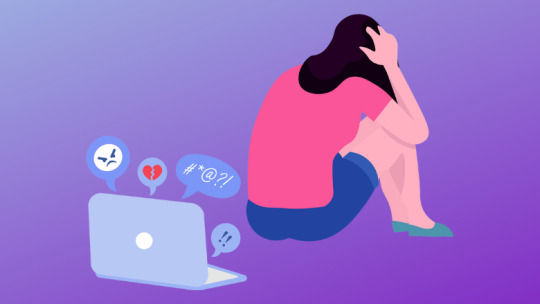
Reference list
Ash, TG 2017, Free speech : ten principles for a connected world, Atlantic Books, London.
Bartlett, J, Norrie, R, Patel, S, Rumpel, R & Wibberley, S 2014, Misogyny on Twitter, apo.org.au.
Blackwell, L, Dimond, J, Schoenebeck, S & Lampe, C 2017, ‘Classification and Its Consequences for Online Harassment’, Proceedings of the ACM on Human-Computer Interaction, vol. 1, no. CSCW, pp. 1–19.
Bruns, A 2005, Gatewatching : collaborative online news production, P. Lang, New York.
Fladmoe, A., & Nadim, M. (2017). Silenced by hate? Hate speech as a social boundary to free speech. In A. H. Midtbøen, K. Steen-Johnsen, & K. Thorbjørnsrud (Eds.), Boundary struggles: Contestations of free speech in the public sphere (pp. 45–75). Oslo, Norway: Cappelen.
Jane, EA 2012, ‘��Your a Ugly, Whorish, Slut”’, Feminist Media Studies, vol. 14, no. 4, pp. 531–546.
Jane, EA 2014, ‘“Back to the kitchen, cunt”: speaking the unspeakable about online misogyny’, Continuum, vol. 28, no. 4, pp. 558–570.
Nadim, M & Fladmoe, A 2019, ‘Silencing Women? Gender and Online Harassment’, Social Science Computer Review, vol. 39, no. 2, p. 089443931986551.
Powell, A., & Henry, N. (2015). Digital harassment and abuse of adult Australians: A summary report. Tech & Me Project, Melbourne: RMIT University and La Trobe University.
0 notes
Text
Week 10
The fragility between online harassment and fan serving
Online harassment encompasses various forms of abusive behavior perpetrated through digital channels, including cyberbullying, hate speech, doxxing, non-consensual image sharing, stalking, trolling, and so on. And not a specific group of people such as women or children, but everyone can have the risk to be the victim of online harassment. In this post, I will discuss about harassment and bullying on social media towards celebrities, especially K-pop idols.
Online harassment towards celebrities has emerged as a pervasive and concerning issue in the digital age, exacerbated by the widespread use of social media platforms as conduits for abusive behavior. Research on this topic underscores the heightened vulnerability of celebrities to online harassment due to their elevated public visibility and exposure (Dunne, 2021). This vulnerability is further compounded by the intense scrutiny and criticism that celebrities often face from the public, as well as from dedicated fan communities. According to statistics, cyberbullying affects a significant portion of the population, with over 37% of internet users reporting being cyberbullied at some point (First Site Guide). Celebrities, in particular, are prime targets for cyberbullying, which can manifest in various forms such as hate speech, doxxing, and objectification.
A notable example of this phenomenon is evident in the realm of K-pop, where celebrities often experience intense scrutiny and competition among fans. Research indicates that cyberbullying is prevalent among teenage K-pop fans, with incidents of harassment and bullying occurring within fan communities (Lee & Song, 2021). Additionally, South Korean celebrities face unique challenges due to the highly competitive nature of the entertainment industry and the prevalence of cyberbullying within the country (Novasia GSIS). This environment exacerbates the risk of online harassment for celebrities, impacting their mental health and well-being.
Furthermore, female celebrities are disproportionately targeted for misogynistic harassment and objectification on social media platforms (Chowdhury et al., 2021). The objectification of women celebrities contributes to the perpetuation of harmful stereotypes and reinforces gender-based inequalities. Such harassment not only undermines the dignity and self-esteem of the individuals targeted but also perpetuates a culture of toxicity and intolerance online.
The impact of online harassment on celebrities extends beyond personal well-being to professional reputation and career prospects. Instances of cyberbullying and harassment can tarnish a celebrity's public image, leading to reputational damage and potential loss of opportunities. Therefore, addressing online harassment towards celebrities requires concerted efforts from various stakeholders, including social media platforms, law enforcement agencies, and society at large. By raising awareness, implementing effective policies, and fostering a culture of respect and empathy online, we can strive towards creating a safer digital environment for all users, including celebrities. Below are some case of K-pop idols face with different types of online harassment that cause shock to the K-pop industry.
Being stalked by sasaeng fans
Nayeon (a member of the popular South Korean girl group TWICE) is one of the most famous case of being spammed by stalker or also known as "sasaeng fan" - crazy fans who are overly obsessed with the Hallyu wave (Iwicka, 2018). The article (ChinnuswamyCorrespondent, 2022) reports on a concerning development regarding a long-time stalker of Nayeon. The stalker, who has a history of harassing Nayeon, claims to be in South Korea again, raising alarms among fans and prompting heightened security measures. The stalker has previously attempted to approach Nayeon on multiple occasions, leading to legal action and restraining orders. Despite efforts to ensure Nayeon's safety, the stalker's persistence poses a continuing threat, highlighting the challenges celebrities face in dealing with obsessive and potentially dangerous individuals. The situation underscores the importance of robust security measures and legal protections for celebrities, as well as the need for greater awareness and support to address stalking and harassment in the entertainment industry.
youtube
Deepfake photos
The emergence of deepfake technology and the circulation of fake photos present significant challenges for K-pop idols, as they become targets for malicious manipulation and exploitation. In a disturbing trend, idols' images are edited into 18+ videos, photos, and negative contexts with fabricated titles, and false rumors alleging romantic relationships with other individuals. This digital deception poses a threat to idols' reputations and well-being, as they may face criticism and backlash from social media users who believe the manipulated content. While dedicated fans may discern the truth behind these fabricated materials, the broader online audience may fall prey to misinformation, leading to unwarranted scrutiny and condemnation of the idols. As a result, K-pop idols navigate a precarious digital landscape where their images and identities can be distorted, and their integrity questioned, underscoring the urgent need for vigilance and protective measures to preserve their dignity and privacy.
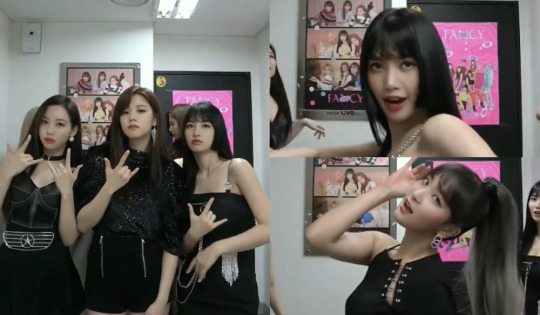
The face of idols are changed with others
Scandals because of fake news

The article (Nghi Vấn Bambam (GOT7) và Mina (TWICE) Hẹn Hò: Lộ Bức Ảnh Thân Thiết Làm Bằng Chứng, 2017) discusses a controversy surrounding a photo allegedly depicting a close moment between Bambam of GOT7 and Mina of TWICE, leading to speculations of a romantic relationship between them. The photo in question sparked discussions among fans, with some interpreting it as evidence of a romantic connection between the two K-pop idols. However, the authenticity and context of the photo remain unclear, and both Bambam and Mina's agencies have not commented on the matter. Despite the lack of official confirmation, the speculation has generated considerable interest and debate within the K-pop community, highlighting the intense scrutiny and rumors that idols often face regarding their personal lives.
The risk of online harassment towards celebrities looms large in the digital age, fueled by the pervasive reach of social media platforms and the anonymity they afford to perpetrators. Celebrities, due to their high visibility and public profiles, are often targets of intense scrutiny and criticism from online users. The consequences of online harassment can be profound, impacting celebrities' mental health, personal well-being, and professional careers. Moreover, the relentless onslaught of negative comments and malicious attacks can erode their self-esteem and lead to feelings of isolation and distress. Despite efforts to mitigate online harassment through platform regulations and legal interventions, the risk remains ever-present, underscoring the need for continued vigilance and support mechanisms to protect celebrities from the perils of online abuse.
youtube
References
Andriani, Rosalyn Anwar, C., Fitriani Akram, N., & Aeni Alimuddin, N. (2020). Cyberbullying among teenage K-pop fans. ResearchGate . https://www.researchgate.net/publication/350635840_Cyberbullying_among_teenage_K-pop_fans/fulltext/6092d9e7a6fdccaebd0dc8cd/Cyberbullying-among-teenage-K-pop-fans.pdf
ChinnuswamyCorrespondent, Y. (2022, September 23). Long-time stalker of Twice singer Nayeon claims to be in South Korea again. The Straits Times. https://www.straitstimes.com/life/entertainment/long-time-stalker-of-twice-singer-nayeon-claims-to-be-in-south-korea-again
Chowdhury, K. (2022). Misogynist internet objectification of women celebrities on social media platforms (facebook) in bangladesh. ResearchGate . https://www.researchgate.net/profile/Kuntala-Chowdhury-4/publication/363469632_Misogynist_Internet_Objectification_of_Women_Celebrities_on_Social_Media_Platforms_Facebook_in_Bangladesh/links/632e488a694dbe4bf4b7dd47/Misogynist-Internet-Objectification-of-Women-Celebrities-on-Social-Media-Platforms-Facebook-in-Bangladesh.pdf
Contributor, Nova. (2022, August 12). Cyberbullying: the case of South Korean celebrities. Novasia. https://novasiagsis.com/cyberbullying-the-case-of-south-korean-celebrities/
Cook, S. (2018, December 7). Cyberbullying statistics and facts for 2016 - 2018 | comparitech. Comparitech; Comparitech. https://www.comparitech.com/internet-providers/cyberbullying-statistics/
Djuraskovic, O. (2023, March 22). FirstSiteGuide team. FirstSiteGuide. https://firstsiteguide.com/cyberbullying-stats/
Dunne, D. (2021). Cyber harassment & celebrities: Exploring personality types, self-efficacy and the types and levels of cyber harassment experienced by celebrities across social media. http://dspace-test.interleaf.ie/bitstream/handle/20.500.12065/3821/Dunne%20D-2021-Cyber%20harassment%20%26%20celebrities-Exploring%20personality%20types%2C%20self-efficacy....pdf?sequence=1&isAllowed=y
Ha , S. (2021). Fans discuss why deepfake is something everyone needs to be worried about. Allkpop. https://www.allkpop.com/article/2021/02/fans-discuss-why-deepfake-is-something-everyone-needs-to-be-worried-about
Iwicka, R. (2018, January 1). Every breath you take: Sasaeng fans. Brill. https://brill.com/display/book/edcoll/9789004365322/B9789004365322-s008.xml
Mendoza, I. (2023, August 14). Ex-Idol reveals how fans sexually harass male stars during shows. International Business Times. https://www.ibtimes.com/ex-idol-reveals-how-fans-sexually-harass-male-stars-during-shows-3708600
Moonbin (ASTRO) bị lộ chuyện muốn “ra đi” từ cách đây 5 năm, lý do khiến fan sốc nặng! (2023). YouTube ; VGT TV - Giải Trí. https://www.youtube.com/watch?v=dnVsLso3G2A
Nghi vấn Bambam (GOT7) và Mina (TWICE) hẹn hò: Lộ bức ảnh thân thiết làm bằng chứng. (2017, March 13). Kenh14. https://kenh14.vn/nghi-van-bambam-got7-va-mina-twice-hen-ho-lo-buc-anh-than-thiet-lam-bang-chung-20170313122452672.chn
#mda20009#kpop#kpopidols#harassment#onlineharassment#stalk#stalker#stalking#nayeon#mina#bambam#twice#deepfake#fakenews#moonbin#suicide#mentalhealth#mental#stress#socialmedia#sasaeng#fan#kpopfan#Youtube
1 note
·
View note
Text
Cyber Bullying in our Community, a repost by Brian Markle Ottawa.
Case 2: Internet stalking (variants - cyber bullying, criminal harassment). Go Fund Me created for criminal prosecution.
Will determine: what constitutes cyber bullying (stalking) and also what is the mindset of the individual who would do this?
What constitutes as cyber bullying (stalking).
· Cyberbullying is when an individual becomes a target by others - using computers, cell phones or other devices - to embarrass, humiliate, torment, threaten or harass. It is often repeated and sustained over a period of time.
· The range of cyberbullying tactics is wide and is constantly changing as new technology emerges and different social networking sites pop up.
· Sending mean or threatening messages by email, text or through comments on a social networking page is an example of cyberbullying.
· Another example is spreading rumours, gossip, or secrets about another person through social networking sites, emails or texts.
· Posting online stories to humiliate or embarrass someone constitutes as cyber bullying. As well as hacking their email account.
· Tricking someone to open up and share personal information and then sharing that information with others is another form of cyber bullying.
· Several Criminal Code offences deal with cyber bullying. Depending on the exact nature of the behaviour, the following current offences could be charged:
o Criminal harassment
o Uttering threats
o Intimidation
o Mischief in relation to data;
o Unauthorized use of computer;
o Identity fraud
o Extortion
o False messages, indecent or harassing telephone calls
o Incitement of hatred; and,
o Defamatory libel.
· If an image of you has been shared on the internet that you want removed, visit needhelpnow.ca for the steps that can be taken to get that picture/video off the internet.
· Extortion in the Criminal Code: "Everyone commits extortion who, without reasonable justification or excuse and with intent to obtain anything, by threats, accusations, menaces or violence"
The Psychology of Cyberbullying.
· Power imbalance is a key trait in cyberbullying. The cyberbullies seem often very powerful in comparison to the victims.
· People who cyberbully often have mental health problems of their own. This can include aggression, depression, impulsivity and substance abuse. They often struggle with narcissism or psychopathy. These individuals have a low level of empathy for others and may bully people to increase their own self-worth.
· Sometimes when individuals are the victims of cyberbullying, they become cyberbullies. This can be because they are looking to gain some control back and may not be able to retaliate in person. Cyberbullying can also be the result of a broken friendship or relationship of some sort and it may be driven by revenge of jealously.
Dark personality traits and anger in cyber aggression perpetration: Is moral disengagement to blame?
From https://outlook.office365.com/mail/inbox
· Cyberbullying can be used to curb negative emotions, self-protection/privacy, as a form of retaliation, etc.
· Victims of cyberbullying or cyber aggression may never feel safe from the perpetrators who can be aggressive at any time from any location and who can publicize their attacks.
Cyberbullying: What are the Psychological Profiles of Bullies, Victims, and Bully Victims?
· This study categorized the individuals into four groups; bullies, victims, bully-victims, and those not involved in cyberbullying.
· Participants who were involved reported higher levels of internalizing problems than those who were not involved. The bully-victim group scored significantly higher on depression, anxiety and stress compared to the rest of the groups.
Are Online Haters Psychopaths? Psychological Predictors of Online Hating Behaviour
From https://www.frontiersin.org/articles/10.3389/fpsyg.2020.00553/full
· Results showed that high scores on the psychopathy subscale were predicators of posting hating comments online.
· Online hatred has been shown to inflate negative emotions. Despite how prevalent cyber aggression, little is known about the personal characteristics of people who routinely engage in such behaviour.
· Trolls on the internet have a high score on the psychopathy scale. Cyber-bullies score high on the sadism scale.
· Dark Triad -narcissism, psychopathy and Machiavellianism (levels of experienced frustration, level of experienced envy and satisfaction with life).
· A classic frustration-aggression hypothesis predicts that frustration may lead to aggressive behaviours.
· High levels of impulsivity can lead to expressing negative behaviour or insulting someone online.
#StopCyberBullying#PsychologyOfCyberbullying#CyberbullyingPrevention#OnlineHarassment#DarkTriadBehaviour
0 notes
Text
The struggles of bloggers: 5 Ultimate Facing challenges in the digital age
The advent of the internet and social media has revolutionized the way information is disseminated, leading to the emergence of bloggers as influential content creators. These individuals and groups have become popular, attracting millions of subscribers across various platforms. However, behind the seemingly flashy world of blogging, there are many challenges bloggers face on a daily basis. This…
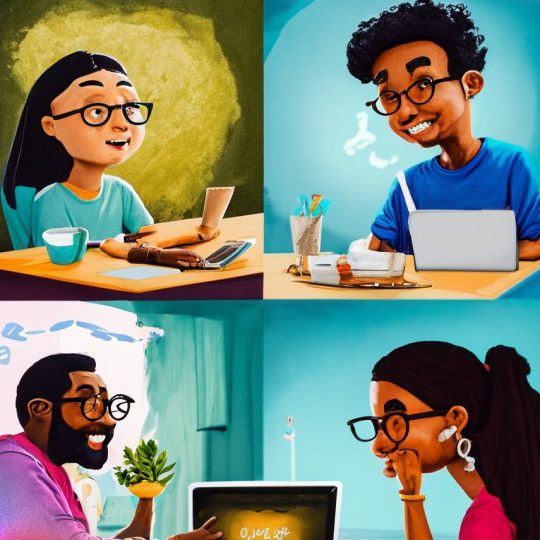
View On WordPress
#AudienceEngagement#blog#BloggersJourney#BloggersLife#BloggingCommunity#BloggingStruggles#ContentCreators#CreativeBlock#CyberbullyingAwareness#digital#DigitalAgeChallenges#DigitalInfluencers#MonetizingPassion#OnlineHarassment#PassionToProfit#SocialMediaPressures#TimeManagementIssues
0 notes
Text
2023: A Year of Gender Equality Online

The Global Partnership for Action on Gender-Based Online Harassment and Abuse (Global Partnership) will bring together countries, international organizations, civil society, and the private sector to better prioritize, understand, prevent, and address the growing scourge of technology-facilitated gender-based violence.
The Global Partnership is also an action coalition as part of the Denmark-led Technology for Democracy initiative. It will address gender-based online harassment and abuse in the long term, with an initial mission to deliver concrete results by the end of 2023.
Background
The digital world holds immense potential to amplify the voices of women, girls, and LGBTQI+ individuals. At the same time, social media platforms and other digital technologies have given rise to new forms and manifestations of gender-based violence through their misuse; and exacerbated preexisting forms of gender-based violence through their scale, speed, and reach.
Moreover, this occurs within an ecosystem characterized by a gender digital divide rooted in structural gender inequalities, in which those who design—and, in some countries or regions, access and use—communications technologies are disproportionately male.
Often, gender-based online abuse and harassment reflect and exacerbates offline discrimination and gender disparities: research indicates that its prevalence can be higher in regions where women and girls have lesser legal status, rights, and protections.
International Considerations
Because gender-based online harassment and abuse can transcend national borders, and be an added dimension of violence in political and ethnic conflict, meaningful efforts for protection, prevention, and accountability require global, multi-sectoral action and coordination.
Gender-based online harassment and abuse include a wide range of acts that are amplified or enabled by social media and technology platforms to control, attack, and silence women and girls, particularly those who have a disability, and/or identify as LGBTQI+ or as a member of a racial, ethnic, or religious minority.
It is a continuum of technology-facilitated gender-based violence that can include (but is not limited to) the non-consensual distribution of intimate digital images; cyberstalking; sextortion; doxing; malicious deep fakes; live-streamed sexual violence; rape and death threats; disinformation; and intimate-partner violence.
Some forms of gender-based online harassment and abuse are criminal; others are not but are nonetheless harmful. Survivors and victims can experience psychological distress, trauma, long-term mental-health impacts, physical and sexual violence, exploitation, and, in some cases, homicide or suicide.
They may also face economic insecurity and political and social exclusion as a result of being targeted online, and step back from leadership roles and opportunities. The COVID-19 pandemic has only exacerbated this problem and its impacts, in parallel with the rise in other forms of gender-based violence during this public-health crisis.
Acts of gender-based online harassment and abuse threaten the safety and ability of individuals to exercise their rights, online and offline; and the strength of inclusive, representative democracies. In individuals’ private lives, gender-based online harassment and abuse can take the form of intimate-partner violence, stalking, financial abuse, or workplace harassment.
At the societal level, anti-democratic forces—both state and non-state malign actors—increasingly misuse technology to lead gendered campaigns of information manipulation against women in public life, including politicians, activists, and journalists.
These acts have a chilling effect on women’s political participation and are intergenerational: for example, witnessing or experiencing gender-based online harassment and abuse can discourage the political and other ambitions of adolescent girls and lower their participation in civic and political debate, both online and offline.
Why the Global Partnership?
Within the last decade, individual countries; United Nations agencies, funds, and programs; the G7; and civil-society representatives have increasingly called for an end to gender-based online harassment and abuse, alongside growing acknowledgment of this issue by the technology sector.
Despite these efforts, significant gaps in research, policy, and evidence-informed practices to understand and address this challenge persist. Meanwhile, gender-based online harassment and abuse continue to rise, both in prevalence and impact.
Informed by survivors, advocates, and researchers, a broad consensus has formed on the steps needed to drive progress. These include, among others, expanding data on the prevalence, forms, and impact of gender-based online harassment and abuse, while also enhancing access to platform data for researchers, civil society, and journalists; remedying the insufficient incentives and responsibility for technology platforms to monitor, prevent, and address the problem; strengthening laws and other frameworks to deter perpetrators and hold them accountable; and scaling support for survivors.
The Global Partnership will work to fill these gaps, elevating the challenge of gender-based online harassment and abuse and advancing international solutions, as well as working toward concrete progress in each member country.
It will focus on developing solutions to address the impacts on individual survivors and victims in their private lives, including in the context of intimate-partner violence; and the societal costs of online harassment, violence, and gendered disinformation directed toward women in their public lives, including as journalists, politicians, or activists.
Objectives
The Global Partnership will focus its work on three strategic objectives:
- Develop and advance shared principles. Partners will develop a collection/compendium of international best practices and principles that situate certain forms of gender-based online harassment and abuse as a type of intersectional gender discrimination, as a threat to democratic values—particularly in the context of gendered disinformation in elections—and, where applicable, as a violation or abuse of human rights with reference to both international and regional instruments. This includes emphasizing the need for greater accountability for perpetrators and framing the experience of gender-based online harassment and abuse as an impediment to individuals’ ability to exercise their right to freedom of expression; enjoy their rights related to privacy; and fully and equally participate in civic and political life.
- Increase targeted programming and resources. Together, partners will focus resources on preventing and responding to gender-based online harassment and abuse, including programs that provide training and support to civil society organizations, journalists, and politically active women on best practices to document and respond to technology-facilitated gender-based violence.
- Expand reliable, comparable data and access to it. Partners will improve the regular collection of comparable data (at the national, regional, and global levels) on gender-based online harassment and abuse and its effects by governments, international organizations, technology platforms, and non-governmental organizations. They will also pilot and evaluate innovative, evidence-informed interventions. Such data should be collected in accordance with safety and ethical standards, and measure the prevalence, impact, and political and economic costs of gender-based online harassment and abuse, particularly at the intersection of gender, race, ethnicity, age, disability, sexual orientation, and gender identity. The Global Partnership will also invest in building a rigorous evidence base to enhance understanding of risk and protective factors associated with experiencing and perpetrating gender-based online harassment and abuse.
Membership
As members of the Global Partnership, countries share several goals and expectations. By joining the Partnership, partners commit to:
- Prioritize the problem of gender-based online harassment and abuse and act in coordination with others to fulfill the Partnership’s three strategic objectives.
- Devote the necessary time and staffing to make meaningful progress in achieving those objectives in 2022. Countries might consider assessing whether there are opportunities to devote resources to addressing gender-based online harassment and abuse, including in existing policies and programs, domestically and internationally. This commitment may but need not include funding contributions.
- Advance activities within their own countries to prioritize and address gender-based online harassment and abuse, and collaborate with non-members to help advance the Partnership.
- Refrain from and oppose the spread of gendered disinformation or any other form of gender-based online harassment and abuse by any state.
Sources: THX News & US Department of State.
Read the full article
0 notes
Link
🤔What would you do if your personal videos were stolen and published on a xxx site?
0 notes
Text
Week 10: Digital Citizenship and Social Media Conflict
Social media has become a place where people are able to express themselves and share their lifestyle on a platform. But, since its introduction social media has become a platform were online harassment and negative behaviour is prevalent.
Social media harassment often details the online activity of “being called offensive names”, “being embarrassed”, “physically threatened", “being sexually harassed”, “being harassed over a long time”, being hurt by a “romantic partner”, “being impersonated, spreading damaging rumors”, “encouraging” the harassment of others and “attempting to hurt the victim in person after online harassment” (Marwick et al 2018, pp. 545). Unfortunately as seen in this week’s readings women are often harassed online and there are many ways in which they can receive this harassment. Marwick and Caplan (2018, p. 545) further detail how harrassment comes in many forms whether it be “pejorative language; doxing; death threats; revenge porn; cyberstalking; and other threatening behavior”.
Revenge porn and the overall spreading of women’s nude photos has become a talked about topic. Meg Groff’s viral Tik Tok about the sharing of women’s nude photos through the analogy of a sandwich has over five million views. She details about how revenge porn is plaguing the younger generations and how her video is "shown from the perspective of a woman being the victim of an incident” because she has noticed a “pattern” of women in “particular being shamed for expressing themselves as sexual beings” (Torres 2021). But she also highlights how it applies to all genders and how people’s bodies should not ever be used against them.
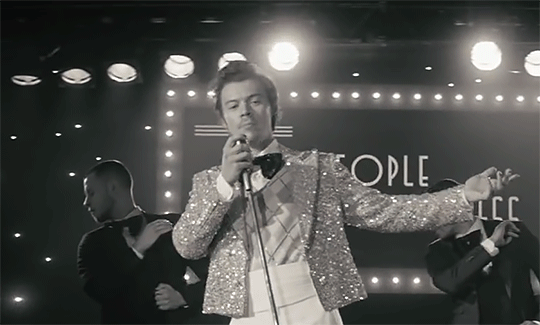
Another example of online harassment is gaslighting which is subtle and often affects a person’s view of themselves. Cambridge (2021) defines gaslighting as a form of “psychological abuse” where an individual is “tricking or controlling someone by making them believe things are not true”. Gaslighting is becoming more prevalent in the media as it focuses on “violence against women” and “what constitutes abuse” (Gleeson 2018). The overall term also details how often these demoralising words often stereotypes women into cliches.
Regulation is often an issue amongst social media platforms due to the site’s content having the ability to become viral quickly. Often videos or photos are able to be reposted despite being reported or taken down. There are many instances on Tik Tok where a video is posted and people have reported it and it somehow meets the app’s guidelines. This highlights how regulation needs to be improved in order to protect these online users. Victims of online abuse need to know their rights. In Australia there are no pieces of legislation against online bullying and or online abuse in place. Only a number of acts in order to protect the victims.
People need to be educated on the different forms of online abuse and harassment. They need to be not only able to identify it but they also need to be aware of their rights. Social media is a digital community in which people are able to connect and communicate with people who share their same interests. If users could only bring a level of kindness and love online it can become a positive platform.

References:
‘Gaslighting’ 2021, in Cambridge Dictionary, viewed 16th May 2021 <https://dictionary.cambridge.org/dictionary/english/gaslighting>.
Gleeson, J 2018, 'What does Gaslighting Mean?' The Conversation, 6 December, viewed 16th May 2021, <https://theconversation.com/explainer-what-does-gaslighting-mean-107888>.
Marwick, A & Caplan, R 2018, 'Drinking male tears: language, the manosphere, and networked harassment', Feminist Media Studies, vol. 18(4), pp. 543-559.
Torres, K 2021, This Girl’s Sandwich Analogy About Sharing Nude Photos Is Going Massively Viral, Buzzfeed, viewed 16th May 2021, <https://www.buzzfeed.com/kristatorres/sandwich-analogy-nudes>
4 notes
·
View notes
Text
Social Media Conflict & Trolling (week 11)
Digital communities have facilitated a plethora of incredible activism and social movements and opportunities, including connecting with likeminded people, innovative forms of media entertainment and exciting career prospects as bloggers, YouTubers and influencers. However, like anything, there’s also a negative side to social media and digital communities, which will be explored in this week’s blog post. Social media conflict is a broad umbrella term covering trolling, cyber-bullying, cancel culture; hate speech and other forms of online harassment. For context, online abuse, harassment and cyber trolling costs Australia approximately $3.7 billion annually in terms of medical bills and loss of income (Burnside & Roy 2019).
Social media conflict can be directly linked to digital communities, because trolling and other forms of online harassment are typically “networked, coordinated and organised acts” (Marwick & Caplan 2018, p. 543). Similarly, media and communication experts, Alice E. Marwick and Robyn Caplan contend that finding an overarching and all-inclusive definition of harassment is “difficult, since it is a constellation of ever-evolving behaviours” (Marwick & Caplan 2018, p. 545). Continuing on, Marwick and Caplan contend that while popular discourse often frames online harassment as “an issue of individual people engaged in abhorrent behaviour”, in reality, cyber-bullying typically involves “systemic networked harassment behaviour [in groups] against their targets” (Marwick & Caplan 2018, p. 544). Therefore, because cyber-bullying efforts are often achieved through online groups, they are often referred to as ‘cyber-mobs’ who create a hostile environment for users and essentially turn the Internet into a battlefield.
Gaslighting is another form of online harassment that has received much media coverage in recent years. Although the terminology may be new, social studies researcher, Jessamy Gleeson, contends that it is used to describe a “relatively old set of behaviours” (Gleeson 2018). Gaslighting covers a range of inappropriate behaviours, however the central practice is “the psychological manipulation of a person in order to erode their sense of self and sanity”(Gleeson 2018). Some common strategies include denial of the gaslightee’s experience, escalation, trivialization and countering. Unfortunately, gaslighting has also been used to dismiss a number of #MeToo confessions of victims of abuse and domestic violence cases. However, on a more societal scale, gaslighting has been used to reframe a common (and toxic) set of female stereotypes, including the “crazy ex-girlfriend” and the “hysterical woman”, challenging the motivations of the accuser instead of fueling the idea that women are crazy (Gleeson 2018).
Anita Sarkeesian is a feminist media critic and showcases the serious implications of online harassment in her TEDxWomen talk. Sarkeesian outlines the severe online misogyny she has experienced first-hand within the video game community and the online harassment she has received due to her field of work. When Sarkeesian founded the ‘Feminist Frequency’, a video web-series exploring the representations of women in pop-culture narratives, she was immediately met with an overwhelmingly negative response from the male-dominated online gaming community. Sarkeesian was publicly humiliated and subjected to abhorrent hate speech, including rape and death threats, a bomb scare and a violent video game, which allowed players to punch an image of her face (Erica Webber 2017). Therefore, Anita Sarrkeensian’s experiences with online harassment epitomize the notion that women, in particular women of colour and queer women, “are more susceptible to online harassment, to the point where [some] young women may see it as a normal part of online experience” (Lenhart et al. 2016).
The legal implications and consequences of online harassment are murky waters, with divided opinions regarding the most appropriate and effective methods for curving online harassment (Milne 2020, lecture slide 15). At present, there is no single piece of legislation against bullying in Australia. However, the sex discrimination act 1984 and criminal code act 1995 are acts offering protection to Australians in the online sphere. Another way of attempting to reduce social media conflict is to go directly to the source – the social media platforms themselves – and urge them to enforce stricter moderating protocols and algorithms to eradicate inappropriate behaviour online. The urge for tighter regulation of the digital sphere is further emphasised by assistant professor of communication and journalism, Glen Fuller. Fuller contends that the reason for insisting on distinctions between individual online social situations is because “each technology and technological change requires due consideration and a measured policy response” (Fuller 2014). Anita Sarkeesian argues that social media platforms need to be the agents of change in order to eliminate online harassment. Sarkeesian believes that their current attempts to regulate cyber-hate are “like Band-Aids on a fundamentally flawed structure” (Erica Webber 2017). Continuing on, advocacy and advice are alternative options to legal remedies, which the eSafety Commissioner is responsible for in Australia. Lastly, on a lighter note, some people have turned to humour to raise awareness about online harassment, including the well-known comedians Hannah Gadsby and Amy Schumer.
Therefore, it is evident that there is an urgent need for well-researched and effective new media legislation regarding online harassment, trolling and cyber-bullying, not simply in Australia, but on a global scale. Furthermore, associate professor of media and communication, Dr Anthony McCosker, contends that the central question for ensuring cyber safety through digital citizenship is “how to account for and promote critical and creative literacies while accounting for conflict, harassment and the wellbeing interests of young people.” Therefore, this week’s topic has highlighted that whilst there are many positive and empowering aspects of digital citizenship and digital communities, there is also a darker side to the Internet and social media, which should not be dismissed, and can unfortunately have a serious, harmful and sometimes irreversible impact on members of society.
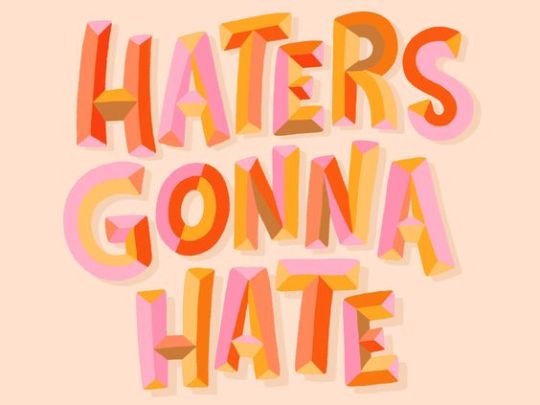
Image Source: ‘unknown’ via Pinterest
References
Burnside, N & Roy, T 2019, ‘Online abuse, harassment, cyber trolling costing Australians $3.7 billion’, ABC News, 28 January, viewed 28 May 2020, <https:// www.abc.net.au/news/2019-01-28/online-abuse-harassment-costing-australians-3.7-billion/10754196>.
Erica Webber, J 2017, ‘Anita Sarkeesian: ‘It’s frustrating to be known as the woman who survived #Gamergate’’, The Guardian, 17 October, viewed 28 May 2020, <https://www.theguardian.com/lifeandstyle/2017/oct/16/anita-sarkeesian-its-frustrating-to-be-known-as-the-woman-who-survived-gamergate>.
Fuller, G 2014, ‘Cyber-safety’: what are we actually talking about?’, The Conversation, 27 February, viewed 29 May 2020, <https://theconversation.com/cyber-safety-what-are-we-actually-talking-about-23505>.
Gleeson, J 2018, ‘Explainer: what does ‘gaslighting’ mean?’, The Conversation, 6 December, viewed 28 May 2020, <https://theconversation.com/explainer-what-does-gaslighting-mean-107888>.
Hopkins, S & Ostini, J 2015, ‘Online harassment is a form of violence’, The Conversation, 8 April, viewed 29 May 2020, <https://theconversation.com/online-harassment-is-a-form-of-violence-38846>.
Lenhart, A, Ybarra, M, Zickuhr, K & Price-Feeney, M 2016, ‘Online Harassment, Digital Abuse, and Cyberstalking in America’, Data & Society Research Institute, 21 November, viewed 30 May 2020, <https://www.datasociety.net/pubs/oh/Online_Harassment_ 2016.pdf>.
Marwick, A E. & Caplan, R 2018, 'Drinking male tears: language, the manosphere, and networked harassment', Feminist Media Studies, vol. 18, no. 4, pp. 543-559.
McCosker, A 2016, ‘Managing digital citizenship: cyber safety as three layers of control’, in McCosker, A, Vivienne, S & Johns, A (eds), Negotiating Digital Citizenship, Rowman & Littlefield International, Maryland, pp. 1-15.
Milne, E 2020, ‘Lecture 11. Digital communities and trolls – understanding social media conflict’, MDA20009 Digital communities, Learning materials via Canvas, Swinburne University of Technology, 27 May, viewed 27 May 2020.
TEDx Talks 2012, Anita Sarkeesian at TEDxWomen 2012, 5 December, viewed 28 May 2020, <https://www.youtube.com/watch?v=GZAxwsg9J9Q>.
#mda20009#digitalcommunities#digitalcitizenship#onlineharassment#onlinetrolling#online femininism#social media conflict
8 notes
·
View notes
Text
Digital Citizenship and Conflict: Social Media Governance
Although social media enables digital citizens the agency and right to voice opinions freely and spark online conversation, this freedom can often lead to conflict and online harassment. Social media conflict expresses how digital citizenship predominantly forefronts power over resources, speech, platforms, markets, brands, and commercial interests, where online landscapes are not necessarily balanced playing fields.
Social media’s somewhat enforcement of freedom of speech can encourage toxic digital citizenship, bullying and online harassment. Online harassment is an umbrella term that includes being “called offensive names…physically threatened online…sexually harassed online…spreading damaging rumours online…encouraging others to harass you online” (Marwick & Caplan, 2018, pp. 545) as well as “doxing, revenge porn, social shaming, and intimidation (Marwick & Caplan, 2018, pp. 544).

It has become apparent that online harassment can be a gendered issue. Women, especially women of colour, young women, and queer women, are primary victims of harassment such as rape threats, pornographic imagery, and sexist speech, from “coordinated and organised” groups such as anti-feminists and men’s rights activists (Marwick & Caplan, 2018, pp. 543 & 545). Gaslighting has also become commonplace on social media as a method of manipulation, power, and control to erode people’s sense of self and sanity (Gleeson, 2018).
Therefore, to counteract online harassment and protect users, social media governance needs to be implemented on a macro level (international laws) and micro level (social media platform group moderation). Social media governance centres matters of how the internet runs, what regulations are in place, whose in control of the internet/social media, legal frameworks, standards and a variety of complex interests. Legal remedies are a strong solution such as The Criminal Code Act 1995, The Australian Human Rights Commission Act 1986, and The Online Safety Act 2021. These offer protection against serious online abuse in relation to images, child cyberbullying and dangerous online content.
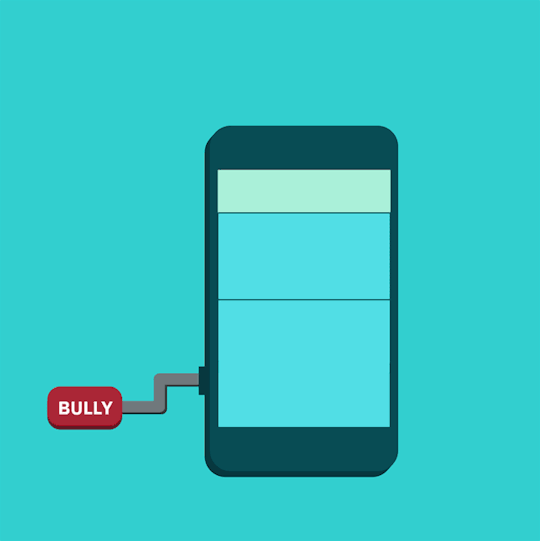
However, other approaches such as Humour to raise awareness through TikTok parody and female comedians such as Hannah Gadsby, Advocacy and Advice from the eSafety Commissioner and Platform pressure and Corporate Social Responsibility are other viable solutions to counter online harassment. Social media platforms have become increasingly aware through pressure from the community that they need to build protection into their terms of service, not only for everyday users, but influencers as well so positive and harmonious digital citizenship can ensue for all.
References:
Gleeson, J. 2018, 'Explainer: What does Gaslighting Mean?' The Conversation, 6 December, viewed 11 April 2022, <https://theconversation.com/explainer-what-does-gaslighting-mean-107888>.
Marwick, AE. & Caplan, R. 2018, 'Drinking male tears: language, the manosphere, and networked harassment', Feminist Media Studies, Vol. 18, Issue. 4, pp. 543-559.
0 notes
Photo
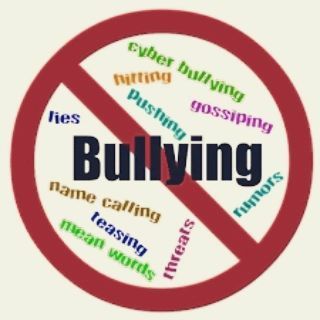
It's #wednesdaywisdom. Typically we think of #mentalhealth in the extremes, like #PTSD or #substanceabuse. At @confidconvos, we know the spectrum is way broader. Shout out today to those suffering from the devastation of #bullying, #CyberBullying, #catfishing, #onlineharassment https://www.instagram.com/p/CaCi8NkNa7Y/?utm_medium=tumblr
#wednesdaywisdom#mentalhealth#ptsd#substanceabuse#bullying#cyberbullying#catfishing#onlineharassment
1 note
·
View note
Photo

Online Hate Targeting Prince Harry, Meghan Markle Comes From Small Number Of Users, New Report Says Meghan Markle has for years been the goa... Read the rest on our site with the url below https://worldwidetweets.com/online-hate-targeting-prince-harry-meghan-markle-comes-from-small-number-of-users-new-report-says/?feed_id=95722&_unique_id=6178796f7fe2a #MeghanMarkle #misinformation #onlineharassment #PrinceHarry #twitter
0 notes
Link
This article written in January 2021 captures the scary reality of the consistent increase in severe online harassment over the years and how often this stems from differing political views.
0 notes
Video
youtube
Ashley Judd talks about the abuse and harassment she has received and still receives to this day online. Online harassment, threats of sexual violence, and verbal abuse is not only limited to women but marginalized groups of many kinds. Misogyny is a real problem and Ashley Judd wants to kick this problem out of this world.
0 notes
Photo
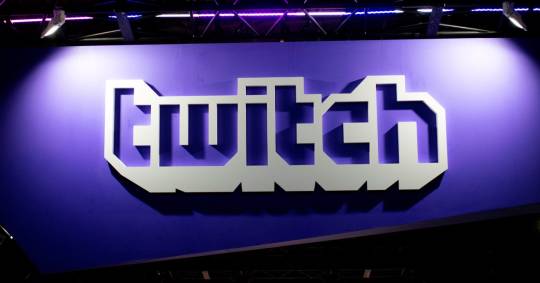
Twitch Will Act on ‘Serious’ Offenses That Happen Off-Platform Twitch is lastly pertaining to terms wit......Read the rest by clicking the link below! https://worldwidetweets.com/twitch-will-act-on-serious-offenses-that-happen-off-platform/?feed_id=43530&_unique_id=606e5be51772e
0 notes